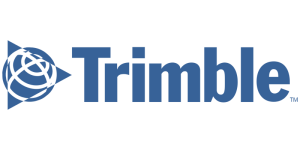Will 301 redirects remain relevant to SEO in 2024?
In the ever-evolving landscape of digital marketing, staying ahead of the curve is crucial for maintaining a competitive edge. As businesses and agencies like JEMSU continuously adapt their strategies to align with the latest search engine algorithms, one classic technique remains a hot topic of discussion: the 301 redirect. This venerable tool has been instrumental in guiding both users and search engines through the maze of ever-changing URLs. But as we look toward the future, specifically the year 2024, questions arise regarding the relevance and efficacy of 301 redirects within the realm of Search Engine Optimization (SEO).
JEMSU, a leader in the digital advertising arena, understands that the foundation of a strong online presence is built on the bedrock of SEO best practices. As we delve into the intricacies of 301 redirects, we consider their role in a strategy that encompasses everything from user experience to link equity. The digital marketers and SEO specialists at JEMSU are always analyzing trends and projecting the future of these practices. Will 301 redirects continue to be the go-to method for website migrations, rebranding, or restructuring in 2024? Or will emerging technologies and methodologies render them obsolete?
In this ever-changing digital atmosphere, JEMSU remains committed to demystifying the complexities of SEO and providing insights into how businesses can navigate these waters. Join us as we explore the potential future of 301 redirects and their place in the SEO toolkit for 2024 and beyond, ensuring that your business remains visible, relevant, and at the forefront of digital innovation.
Table of Contents
1. The Evolution of Search Engine Algorithms and their Impact on 301 Redirects
2. The Role of 301 Redirects in Site Migration and Domain Consolidation
3. The Importance of 301 Redirects in Preserving Link Equity for SEO
4. The Potential Alternatives to 301 Redirects for Webpage Redirection
5. The Effect of 301 Redirects on User Experience and Site Performance
6. Best Practices for Implementing 301 Redirects in a Future-Proof SEO Strategy
7. FAQs
Instant SEO Checker + Score & Report
Enter the URL of any landing page to see how optimized it is for one keyword or phrase...
The Evolution of Search Engine Algorithms and their Impact on 301 Redirects
As search engine algorithms continue to evolve, the impact on various SEO tactics, including the use of 301 redirects, remains a topic of discussion and strategic planning. At JEMSU, we closely monitor these algorithmic changes to ensure our strategies remain effective and to provide the best possible outcomes for our clients.
Search engine algorithms are designed to deliver the most relevant, user-friendly content to their users. Over the years, these algorithms have grown increasingly complex, using numerous factors to rank content. One constant in the realm of SEO has been the value of 301 redirects as a tool for informing search engines that a page has permanently moved to a new location. This method ensures that the link equity—the value passed through hyperlinks—is maintained, which is crucial for maintaining a website’s search engine ranking.
The future of 301 redirects continues to be relevant as search engines, like Google, consistently emphasize the importance of user experience. For example, if a website undergoes a rebranding and changes its domain name, 301 redirects are essential for smoothly guiding users and search engine bots to the new URLs without disrupting the user experience or losing the accumulated search equity.
JEMSU understands that while the core function of 301 redirects is likely to remain unchanged, the way search engines process them may evolve. Search engines aim to understand user intent and the context of links more deeply, which could affect how 301 redirects contribute to SEO. As algorithms become more sophisticated, they may start to differentiate between redirects done for legitimate reasons and those that might be attempting to manipulate rankings.
An analogy to consider is that of a well-organized library. When a book changes its location, the library’s catalog must be updated so that readers can find the book without confusion. In this analogy, the 301 redirect is the update in the catalog, ensuring that both users and search engines can locate the website’s content without hitting dead ends.
In line with staying ahead of the curve, JEMSU focuses on implementing 301 redirects as part of a comprehensive SEO strategy. This includes not only addressing the immediate needs of a website’s restructuring but also anticipating how future algorithm updates might interpret such changes. By doing so, JEMSU ensures that the digital presence of businesses remains robust and adaptable to the ever-changing digital landscape.
As we look towards 2024 and beyond, the role of 301 redirects is likely to be influenced by the ongoing advancements in machine learning and artificial intelligence within search algorithms. While these technologies may change how redirects are handled, the fundamental need for clear, directive signaling to search engines via redirects will undoubtedly persist. JEMSU will continue to leverage the latest data and trends to guide the strategic use of 301 redirects, ensuring that our clients’ websites are well-positioned to adapt to future changes in search engine algorithms.
Google Ads Success Example
The Challenge: The Challenge: Increase new dental patients with better Google Ads campaigns.
The Role of 301 Redirects in Site Migration and Domain Consolidation
When a business undergoes a site migration or decides to consolidate multiple domains, 301 redirects become a critical tool in the SEO toolkit. As a leading digital advertising agency, JEMSU emphasizes the importance of correctly implementing 301 redirects during these processes to maintain and improve search engine rankings. A 301 redirect is a permanent redirect from one URL to another, ensuring that visitors and search engines are directed to the correct page. This becomes particularly relevant in site migrations, where a website’s structure might undergo significant changes.
Imagine you’re moving to a new house, and you’ve submitted a change of address form to ensure all your mail is redirected to your new location. A 301 redirect works similarly for your website, informing search engines that your content has a new permanent address. This helps in preserving the SEO value that the original pages have accumulated over time. Without these redirects, any established ranking power and domain authority could be lost, leading to a potential drop in search visibility.
JEMSU understands that during domain consolidation, the stakes are equally high. Companies often acquire other businesses or decide to merge multiple sites into a single, more robust domain. Here, 301 redirects help by seamlessly transferring the SEO value from multiple domains to a primary one. For instance, if a company with several product-specific microsites consolidates them into one comprehensive site, 301 redirects ensure that the link equity from those microsites is not squandered.
According to Moz, 90-99% of link equity is passed through a 301 redirect, making it an essential process for maintaining SEO health. This statistic underscores the importance of 301 redirects as part of a strategic SEO approach. JEMSU leverages this SEO best practice to help businesses navigate the complexities of site migrations and domain consolidations, minimizing the risk of losing valuable search engine rankings.
In summary, the role of 301 redirects in site migration and domain consolidation is akin to a well-coordinated ballet, where each step must be meticulously planned and executed. JEMSU’s expertise ensures that businesses transitioning their online presence do so with grace and precision, securing their SEO standing in the ever-evolving digital landscape.
The Importance of 301 Redirects in Preserving Link Equity for SEO
When discussing the relevance of 301 redirects to SEO in the future, it’s essential to consider their role in preserving link equity. At JEMSU, we emphasize the significance of maintaining link equity as a crucial aspect of any SEO strategy. Link equity, often referred to as “link juice,” is a term used to describe the value and authority that a link can pass from one page to another. This value is a composite of various factors, including the linking page’s credibility, topical relevance, and the number of other links on that page.
Imagine you’ve spent years building a robust profile of inbound links to your website’s pages. These links are akin to digital votes of confidence, signifying that other sites consider your content valuable and authoritative. Now, suppose you decide to restructure your website or change domain names. Without proper redirection, those hard-earned links would point to non-existent pages, effectively wasting the accumulated equity.
This is where 301 redirects come into play. A 301 redirect is a permanent redirect from one URL to another. When applied correctly, it passes along most of the link equity from the original page to the new one. In fact, Google has indicated that a 301 redirect will pass a majority of the link equity to the redirected page, making it an indispensable tool for SEO.
For example, let’s say a well-known industry leader links to a particular article on your site. This link is a strong endorsement, funneling valuable traffic and contributing to your site’s overall domain authority. If you move that article to a new URL without a 301 redirect, you risk losing the benefits of that endorsement. By implementing a 301 redirect, JEMSU ensures that the link equity is not lost, and the value continues to contribute to your site’s search engine rankings.
301 redirects are also essential when consolidating multiple pages into a single, more authoritative piece of content. This is a common practice when eliminating duplicate content or simply streamlining a site’s structure. By redirecting the old pages to the new, consolidated one, all the individual link equities combine, potentially creating an even stronger signal to search engines about the relevance and authority of the new page.
In conclusion, 301 redirects serve as an invisible bridge that carries the weight of your SEO efforts across the ever-changing landscape of your website. As search engines evolve, the need for such mechanisms to preserve link equity remains constant. JEMSU keeps this at the forefront of our SEO strategies, ensuring that our clients’ digital presence remains strong, despite the inevitable changes that come with online growth and development.
SEO Success Story
The Challenge: The Challenge: Design an SEO friendly website for a new pediatric dentist office. Increase new patient acquisitions via organic traffic and paid search traffic. Build customer & brand validation acquiring & marketing 5 star reviews.
The Potential Alternatives to 301 Redirects for Webpage Redirection
When discussing the potential alternatives to 301 redirects for webpage redirection, it’s important to recognize that the digital landscape is continuously evolving, and with it, the tools and practices for SEO. At JEMSU, as a proactive digital advertising agency, we stay at the forefront of these changes to ensure our strategies remain effective and efficient.
One alternative to the traditional 301 redirect is the use of the 302 or 307 temporary redirects when the change is not permanent. While 301 redirects signal a permanent move to search engines, thereby passing link equity to the new URL, 302 and 307 redirects tell search engines that the move is only temporary, and the original URL will eventually be reinstated. It’s like telling your mailman you’re on vacation and to hold your mail for a while, rather than submitting a change of address form.
Another innovative approach involves the use of JavaScript to handle redirection. Although historically search engines have had difficulty crawling JavaScript, advancements in search engine technology have improved their ability to process JavaScript redirects. This method can be particularly useful in situations where server access is limited or where you need to implement complex redirect logic that a server-side solution might struggle with.
Canonical tags also provide a method for indicating preferred URLs on pages with duplicate content, which can sometimes be used as an alternative to a 301 redirect, though it does not physically redirect the user. Imagine a library with multiple copies of a book; the canonical tag tells search engines which copy is the main one to be indexed, much like a librarian might guide you to the best version of a text.
Moreover, with the push towards a more semantic web and the use of schema markup, some experts speculate that search engines may become more adept at understanding the context and intent behind URL changes, potentially reducing the reliance on strict redirect rules.
At JEMSU, we understand that the digital world is driven by data. While there are no concrete statistics that predict the demise of 301 redirects in 2024, it’s clear that alternative methods are gaining traction and may become more prominent depending on the technical requirements and SEO strategies of individual websites.
In conclusion, while the 301 redirect has been a cornerstone of SEO for many years, it’s essential to stay aware of alternative methods for webpage redirection. JEMSU is committed to leveraging these alternatives when they serve our clients’ goals better, always with an eye towards the future of SEO.
Jemsu has been a great asset for us. The results have grown at strong positive linear rate. They have been extremely accessible, flexible, and very open about everything. Natalya is a star example of how to work with your accounts to drive them forward and adjusts to their quirks. Jaime is able to clearly communicate all of the work that is being done behind the scenes and make sure that all of my team is understanding.
I couldn’t be more pleased with my JEMSU Marketing Team!
Julia, Tamara, Joelle and Dally have exceeded my expectations in professionalism, creativity, organization, and turn around time with my Social Media Management project.
I have thoroughly enjoyed sharing my journey with this team of empowered women!
Thank you JEMSU! Your team designed and launched my new website, and developed strategies to drive traffic to my site, which has increased my sales. I highly recommend your Website & SEO Agency!
Jemsu has always been professional and wonderful to work with on both the SEO and website design side. They are responsive and take the time to explain to us the complicated world of SEO.
Jemsu is an excellent company to work with. Our new website blows away our competition! Unique, smooth, and flawless. Definite wow factor!
The folks at JEMSU were excellent in designing and launching our new website. The process was well laid out and executed. I could not be happier with the end product and would highly recommend them to anyone.
Jemsu is a great company to work with. Two prong approach with a new site and SEO. They totally redesigned my website to be more market specific, responsive, and mobile friendly. SEO strategy is broad based and starting to kick in. My marketing will also be adding Facebook and Google ads in the coming weeks. Thanks for your all you hard work.
JEMSU has wworked with our team to create a successful campaign including incorporating an overall rebranding of our multiple solutions. The JEMSU team is embracing of our vision and responds timely with life of our ideas.
JEMSU is great company to work with. They listen & really work hard to produce results. Johnathan & Sasha were such a big help. If you have a question or concern they are always there for you.
I would definitely recommend them to anyone looking to grow their company through adwords campaigns.
Jemsu have exceeded our expectations across all of our digital marketing requirements, and I would recommend their services to anyone who needs expertise in the digital marketing space.
JEMSU was able to quickly migrate my site to a new host and fix all my indexation issue. I look forward to growing my services with JEMSU as I gain traffic. It’s a real pleasure working with Julian and Juan, they’re both very professional, courteous and helpful.
JEMSU is incredible. The entire team Is professional, they don’t miss a deadlines and produce stellar work. I highly recommend Chris, Rianne, and their entire team.
We’ve been working with JEMSU for about five months and couldn’t be happier with the outcome. Our traffic is up and our leads are increasing in quality and quantity by the month. My only regret is not finding them sooner! They’re worth every penny!
The Effect of 301 Redirects on User Experience and Site Performance
When discussing the future of SEO and the viability of 301 redirects, it’s crucial to consider their impact on user experience (UX) and site performance. At JEMSU, we understand that UX is an integral part of a website’s success, as it directly influences bounce rates, conversion rates, and the overall satisfaction of the site’s visitors. A 301 redirect, which is a permanent redirect from one URL to another, can either enhance or detract from this experience.
Imagine a frequent visitor looking for their favorite blog post only to find an error page because the post has moved and there is no redirect in place. This is akin to visiting your favorite coffee shop and finding it has moved without any signposting. A well-implemented 301 redirect is like a helpful sign that guides customers to the new location, ensuring they can find what they’re looking for without frustration.
Moreover, 301 redirects can play a significant role in maintaining site performance by ensuring that search engines and users are directed to the most relevant, up-to-date content without encountering broken links or outdated pages. This is particularly important because according to a study by Akamai, as much as a 100-millisecond delay in website load time can drop conversion rates by 7%. A seamless redirect can prevent such delays and maintain the integrity of the user journey, thus potentially salvaging conversions and preserving the site’s reputation.
In the context of SEO, JEMSU leverages the power of 301 redirects to preserve link equity, which is the value passed from one page to another through links. Without a proper redirect, the equity from backlinks pointing to the old URL could be lost, significantly affecting the website’s ranking in search engine results. By implementing 301 redirects strategically, we ensure that the value of those backlinks is transferred to the new URL, maintaining or even improving the site’s SEO standing.
An example of 301 redirects’ importance to user experience can be seen during a website redesign or platform migration. If a company’s blog has built a strong following and amassed significant backlink equity, a migration to a new content management system could potentially disrupt access to the content. By applying 301 redirects, JEMSU ensures that readers and search engines are seamlessly directed to the correct posts on the new platform, thus upholding the site’s performance and user satisfaction.
In summary, while the technical aspects of 301 redirects are often discussed in the context of SEO, their impact on user experience and site performance is equally significant. As search engines continue to refine their algorithms with a focus on user satisfaction, the role of 301 redirects in providing a smooth and efficient user journey becomes even more crucial. In 2024 and beyond, JEMSU will continue to implement 301 redirects as a key component of a holistic SEO strategy that prioritizes both the user experience and the technical health of the websites we manage.
SEO Success Story
The Challenge: Increase dent repair and body damage bookings via better organic visibility and traffic.
Best Practices for Implementing 301 Redirects in a Future-Proof SEO Strategy
In the dynamic landscape of SEO, 301 redirects play a crucial role in maintaining a website’s authority and search rankings. As a leading digital advertising agency, JEMSU recognizes the importance of keeping up with best practices for implementing 301 redirects to ensure a future-proof SEO strategy for our clients.
A 301 redirect is essentially a permanent forwarding address for a webpage. When a URL is updated or a page is deleted, a 301 redirect informs search engines that the old URL has permanently moved to a new location. This is critical for preserving the link equity that the original page has built over time, which is a key component of SEO. Without proper redirection, that valuable link equity would be lost, and the site could suffer in search rankings.
One of the best practices that JEMSU advises is to perform a thorough audit of all the redirects periodically. This ensures that all redirects are functioning correctly and are still necessary. As search engines evolve, they become more adept at understanding the intent and context of content, which makes having a clean, well-organized redirect structure more important than ever.
Another important consideration is the user experience. JEMSU emphasizes that redirects should be implemented in a way that is seamless to the user, minimizing load times and avoiding chains of multiple redirects, which can be frustrating and may negatively impact site performance. For example, if a visitor clicks on a link that goes through a series of redirects before reaching the final destination, the delay might lead them to bounce from the site, which is not only a poor user experience but can also harm the site’s SEO performance.
To illustrate the impact of 301 redirects on SEO, let’s take an analogy from the real world. Imagine you’re trying to reach a popular store that has recently moved to a new location. If the store has left clear signs directing you to the new location, you’ll have no trouble finding it, and your loyalty to the store remains unaffected. Similarly, when a webpage moves to a new URL, a 301 redirect serves as that sign, guiding both search engines and users to the new page, ensuring the continuity of traffic and maintaining the site’s SEO value.
In terms of stats, it’s often cited that a 301 redirect can pass 90-99% of its link equity to the new page. This statistic underlines why it’s imperative to use 301 redirects to preserve the SEO efforts previously invested in a webpage.
In conclusion, as we prepare for 2024 and beyond, JEMSU stays ahead of the curve by implementing these and other best practices for 301 redirects within a comprehensive SEO strategy. By doing so, we ensure that our clients’ websites remain robust in the face of search engine algorithm changes, while also providing an excellent user experience.
FAQS – Will 301 redirects remain relevant to SEO in 2024?
1. **What is a 301 redirect?**
– A 301 redirect is a permanent redirection from one URL to another. It’s used to send visitors and search engines to a different URL than the one they originally requested, without losing the SEO value the original URL may have accumulated.
2. **Why are 301 redirects important for SEO?**
– 301 redirects are crucial for SEO because they transfer the SEO value of the old URL to the new one, preserving link equity. This prevents broken links when pages are moved or deleted, which could otherwise hurt a site’s ranking in search engine results pages (SERPs).
3. **Will 301 redirects still affect SEO positively in 2024?**
– It’s highly likely that 301 redirects will remain relevant to SEO in 2024 as they are a fundamental part of how the web and search engines operate. The principle of link equity and the need to maintain a cohesive structure on the web is not expected to change drastically in the near future.
4. **Can 301 redirects cause any SEO issues?**
– If not implemented correctly, 301 redirects can lead to SEO issues such as loss of traffic, reduced page rank, and broken backlinks. It’s important to ensure that redirects are set up properly and that search engines have indexed the new URLs.
5. **How do I properly implement a 301 redirect?**
– To implement a 301 redirect properly, you should use the correct method for your server (e.g., editing the .htaccess file on Apache servers). You should redirect to a relevant page, ensure the new page is similar in content to the old, update sitemaps, and check that the redirects work as intended.
6. **Is there a limit to the number of 301 redirects I can have?**
– There is no fixed limit to the number of 301 redirects you can have. However, too many redirects can slow down your site and create a complex redirection chain, which can be problematic for both users and search engines.
7. **How long does it take for a 301 redirect to affect search rankings?**
– The time it takes for a 301 redirect to affect search rankings can vary. Typically, it may take a few days to a few weeks for search engines to re-crawl and index the new URLs and for the changes to be reflected in search rankings.
8. **Do 301 redirects transfer all SEO value from the old URL to the new one?**
– Most of the time, a 301 redirect will transfer the majority of SEO value to the new URL, but there may be a small loss of link equity. Google has indicated that 301 redirects pass on a significant amount of ranking power.
9. **Should I use a 301 or 302 redirect for temporary page relocation?**
– For temporary page relocations, you should use a 302 redirect, which indicates a temporary move. A 301 redirect signals a permanent change and should only be used if you do not intend for the original URL to be used again.
10. **How can I monitor the impact of 301 redirects on my site’s SEO performance?**
– To monitor the impact of 301 redirects, you should track your site’s traffic and rankings with tools like Google Analytics and Google Search Console. Check for crawl errors, keep an eye on the index status of both the old and new URLs, and monitor backlinks to ensure they are being updated to point to the new URLs.
SEO Success Story
The Challenge: Increase new dental patients with better organic visibility and traffic.















